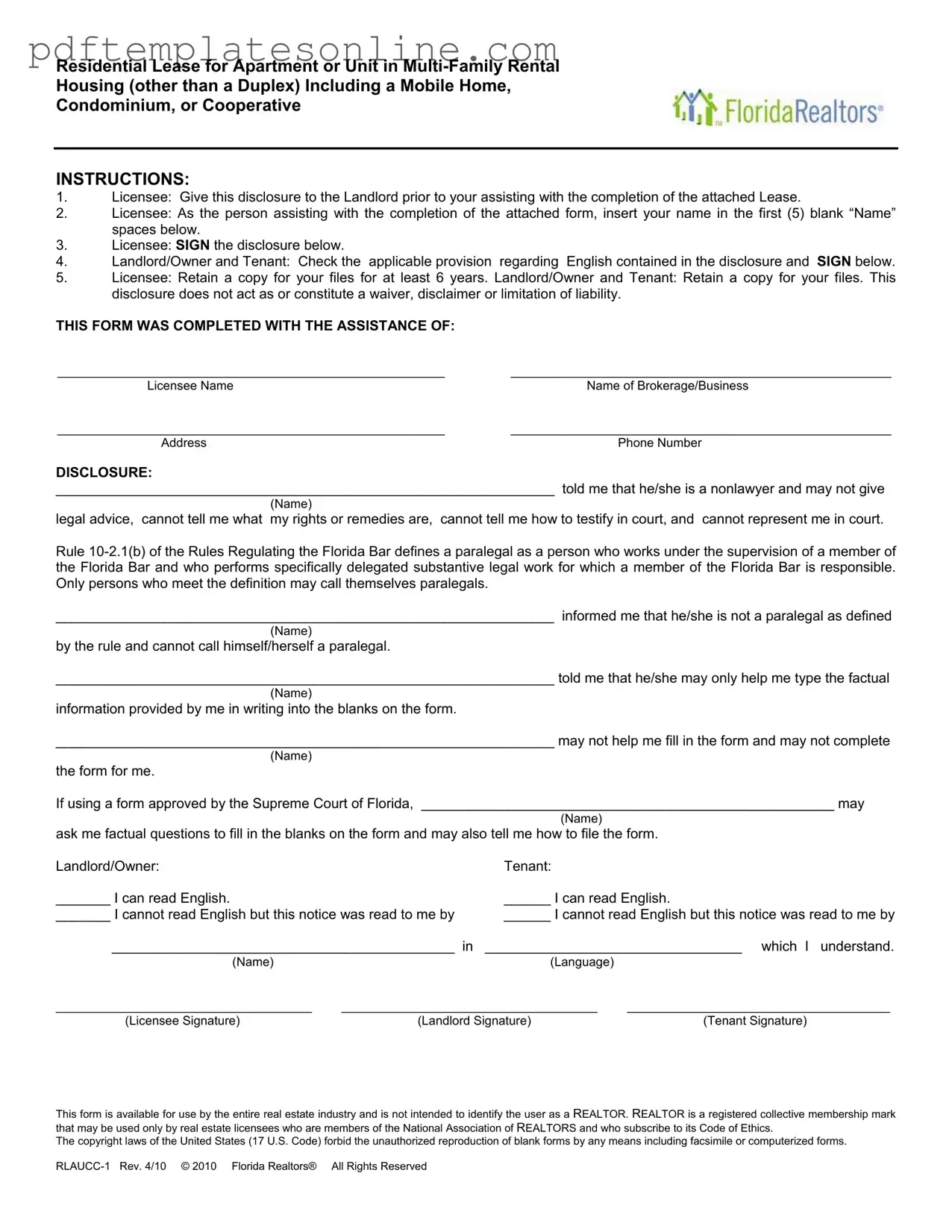When filling out the Florida Realtors Residential Lease form, individuals often make several common mistakes that can lead to complications later on. Awareness of these errors can help ensure that the lease is completed accurately and effectively.
One frequent mistake is failing to provide complete information in the Terms and Parties section. This section requires specific details such as the names of the landlord and tenant, the lease term, and the start and end dates. Omitting any of this information can create confusion regarding the parties involved and the duration of the lease.
Another common error occurs when individuals neglect to check the applicable provisions regarding language comprehension. Both the landlord and tenant must indicate whether they can read English or if someone read the lease to them in another language. If this step is overlooked, it may lead to misunderstandings about the lease's terms.
Inaccurate or incomplete information regarding rent payments and charges is another area where mistakes frequently happen. Tenants should ensure they fill in the correct rental amount, payment schedule, and any applicable taxes. Errors in these details can result in disputes over payment expectations and responsibilities.
Additionally, many people fail to check the boxes for deposits, advance rent, and late charges. It is crucial to specify whether a security deposit, advance rent, or any late fees apply. Leaving these sections blank can lead to misunderstandings regarding financial obligations.
Another mistake involves neglecting to clarify the utilities section. Tenants must specify which utilities they will be responsible for and which will be covered by the landlord. Incomplete information in this area can lead to unexpected costs and disputes over utility payments.
Lastly, individuals often do not take the time to read the lease carefully before signing. The lease imposes significant legal obligations, and failing to understand these terms can result in unintended consequences. It is essential to review all sections thoroughly to ensure clarity and agreement on all points.
